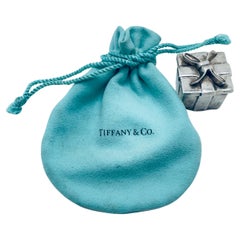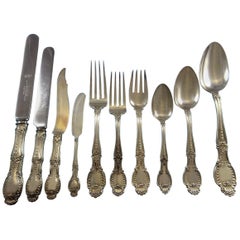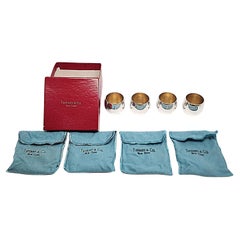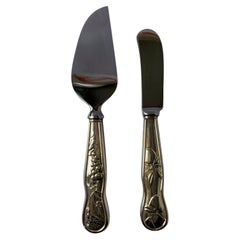Tiffany Flatware Box
Vintage 1950s American Art Deco Flatware and Serving Pieces
Sterling Silver
Antique 1890s American Sterling Silver
Sterling Silver
Recent Sales
20th Century Barware
Sterling Silver
1990s Flatware and Serving Pieces
Sterling Silver
20th Century Flatware and Serving Pieces
Sterling Silver, Stainless Steel
20th Century Flatware and Serving Pieces
Sterling Silver
20th Century Flatware and Serving Pieces
Sterling Silver
20th Century American Sterling Silver
Sterling Silver
Antique 1870s Sterling Silver
Sterling Silver
Antique 1890s Sterling Silver
Sterling Silver
Antique 1880s American Sterling Silver
Sterling Silver
Early 20th Century American Sterling Silver
Sterling Silver
20th Century Sterling Silver
Sterling Silver
20th Century Barware
20th Century Modern Barware
Sterling Silver
20th Century American Edwardian Platters and Trays
Sterling Silver
20th Century Silver Bowls
Sterling Silver
Early 20th Century American American Classical Sterling Silver
Walnut
Vintage 1960s American More Silver, Flatware and Silverplate
Silver
Vintage 1960s Italian More Silver, Flatware and Silverplate
Silver
People Also Browsed
Antique Early 1900s British Neoclassical Dinner Plates
Gold, Enamel
Antique Late 19th Century European Moorish Architectural Elements
Wrought Iron
Vintage 1910s English Dinner Plates
Enamel, Gold
Antique 19th Century French Porcelain
Gold
Antique Early 1800s English Georgian Sterling Silver
Sterling Silver
Antique 1810s English George III Wine Coolers
Silver, Sterling Silver
Antique 19th Century Spanish Baroque Sofas
Wrought Iron
20th Century British Arts and Crafts More Lighting
Glass, Uranium Glass
Vintage 1940s Danish Hollywood Regency Sterling Silver
Gold Plate, Silver, Sterling Silver
Antique Late 19th Century French Louis XVI Sterling Silver
Sterling Silver
Vintage 1930s Sterling Silver
Sterling Silver
Early 20th Century Tableware
Sterling Silver
20th Century Sterling Silver
Sterling Silver
20th Century Tableware
Sterling Silver
20th Century Sterling Silver
Sterling Silver
Antique Late 19th Century Sterling Silver
Sterling Silver
Tiffany Flatware Box For Sale on 1stDibs
How Much is a Tiffany Flatware Box?
Tiffany & Co. for sale on 1stDibs
Tiffany & Co. is one of the most prominent purveyors of luxury goods in the United States, and has long been an important arbiter of style in the design of diamond engagement rings. A young Franklin Delano Roosevelt proposed to his future wife, Eleanor, with a Tiffany ring in 1904. Vanderbilts, Whitneys, Astors and members of the Russian imperial family all wore Tiffany & Co. jewelry. And Jacqueline Kennedy Onassis preferred Tiffany china for state dinners at the White House.
Although synonymous with luxury today, the firm started out rather modestly. Charles Lewis Tiffany and John B. Young founded it in Connecticut as a “stationery and fancy goods emporium” in 1837, at a time when European imports still dominated the nascent American luxury market. In 1853, Charles Tiffany — who in 1845 had launched the company’s famed catalog, the Blue Book, and with it, the firm’s signature robin’s-egg blue, which he chose for the cover — shifted the focus to fine jewelry.
In 1868, Tiffany & Co. gained international recognition when it became the first U.S. firm to win an award for excellence in silverware at the Exposition Universelle in Paris. From then on, it belonged to the pantheon of American luxury brands.
At the start of the Gilded Age, in 1870, Tiffany & Co. opened its flagship store, described as a "palace of jewels" by the New York Times, at 15 Union Square West in Manhattan. Throughout this period, its designs for silver tableware, ceremonial silver, flatware and jewelry were highly sought-after indicators of status and taste. They also won the firm numerous accolades, including the grand prize for silverware at the Paris Exposition of 1878. Among the firm’s glittering creations from this time are masterworks of Art Nouveau jewelry, such as this delicate aquamarine necklace and this lavish plique-à-jour peridot and gold necklace, both circa 1900.
When Charles Lewis Tiffany died, in 1902, his son Louis Comfort Tiffany became the firm’s design director. Under his leadership, the Tiffany silver studio was a de facto design school for apprentice silversmiths, who worked alongside head artisan Edward C. Moore. The firm produced distinctive objects inspired by Japanese art and design, North American plants and flowers, and Native American patterns and crafts, adding aesthetic diversity to Tiffany & Co.’s distinguished repertoire.
Tiffany is also closely associated with diamonds, even lending its name to one particularly rare and exceptional yellow stone. The firm bought the Tiffany diamond in its raw state from the Kimberley mines of South Africa in 1878. Cut to create a 128.54-carat gem with an unprecedented 82 facets, it is one of the most spectacular examples of a yellow diamond in the world.
In a broader sense, Tiffany & Co. helped put diamonds on the map in 1886 by introducing the American marketplace to the solitaire diamond design, which is still among the most popular engagement-ring styles. The trademark Tiffany® Setting raises the stone above the band on six prongs, allowing its facets to catch the light. A lovely recent example is this circa-2000 platinum engagement ring. Displaying a different design and aesthetic (but equally chic) is this exquisite diamond and ruby ring from the 1930s.
Find Tiffany & Co. jewelry, serveware and decorative objects for sale on 1stDibs.
- 1stDibs ExpertAugust 17, 2021A Tiffany & Co. engagement ring can cost as little as $13,000 or as much as $500,000 depending on the center stone’s carat weight, the band material and whether or not there are any side stones. The smaller the stone, the cheaper the ring will be. Find engagement rings designed by Tiffany & Co. on 1stDibs.
Read More
Selena Gomez’s Classic Wedding Look Features Ralph Lauren and Tiffany & Co.
The actress and Benny Blanco tied the knot with style in Santa Barbara over the weekend.
Unexpected Gems Were All Over the Latest High-Jewelry Collections
Diamonds and sapphires still played a starring role, but less popular stones popped up too.
15 Scintillating Jewelry Watches to Elevate Your Holiday Style
Watchmakers have tucked their movements into all manner of precious baubles, from lapel pins to cocktail rings. The result is dazzling, wearable art that will get you to the party on time.
The 6 Most Popular Jewelry Houses on 1stDibs
Get to know the history behind the world's most iconic jewelry houses and the fabulous styles they designed.
The Best Ways to Dress for Your Astrological Sign
Makeup and astrology expert Linda Mason dispenses fashion advice for every zodiac sign. Does your wardrobe match your horoscope?



